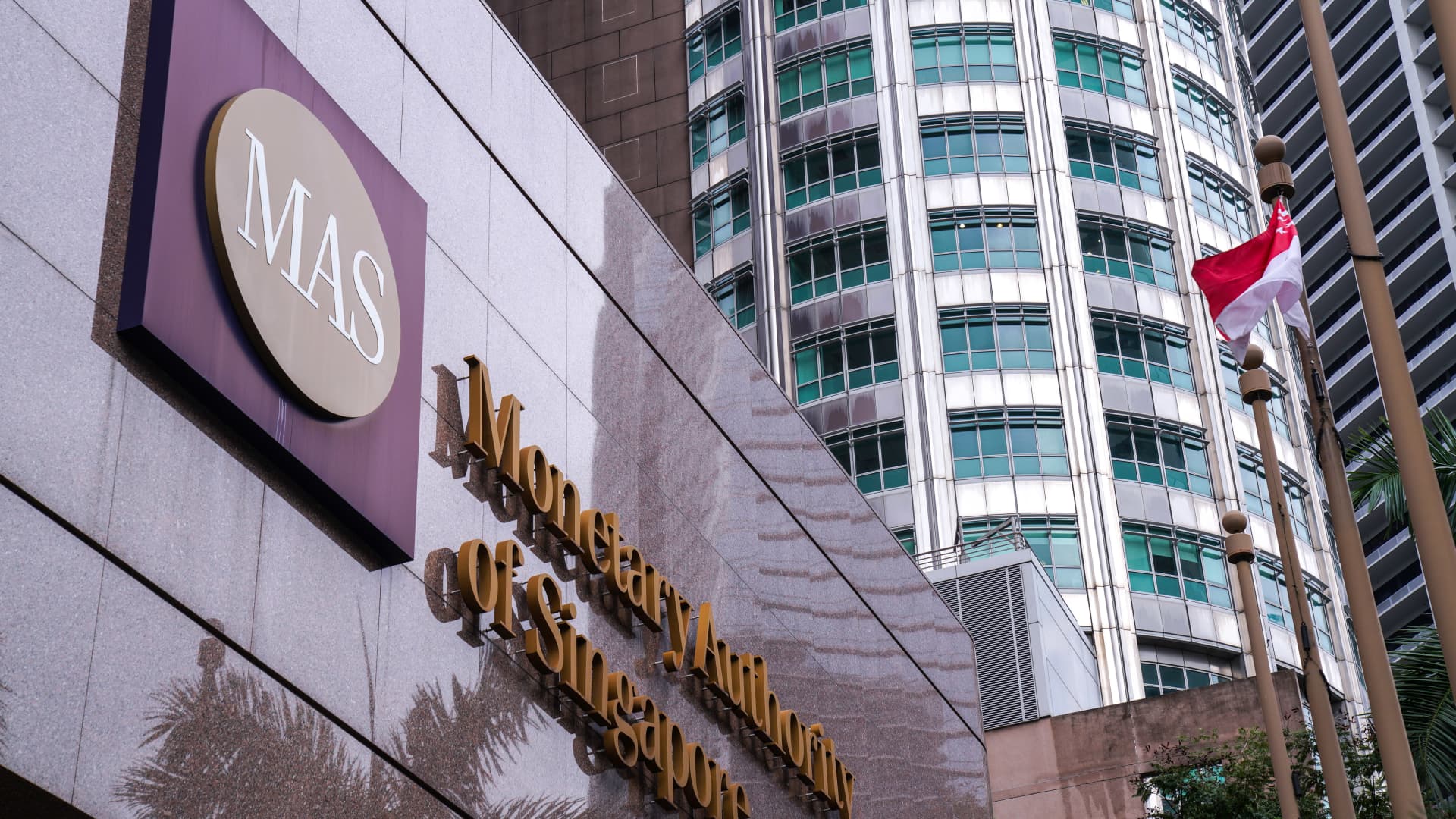
Signage for the Monetary Authority of Singapore is displayed outside the central bank’s headquarters in Singapore, on October 22, 2019. Singapore’s central bank tightened its monetary policy on Thursday, saying the widely forecast move will slow the inflation momentum.
Ore Huiying | Bloomberg | Getty Images
Singapore’s central bank tightened its monetary policy on Thursday, saying the widely forecast move will slow the inflation momentum as the city state ramps up its battle against intensifying price pressures made worse by the Ukraine war.
The policy tightening, the third in the past six months, came as separate government figures showed Singapore’s economic momentum waning over the first quarter.
The local dollar jumped briefly after the Monetary Authority of Singapore (MAS) re-centered the mid-point of the exchange rate policy band known as the Nominal Effective Exchange Rate, or S$NEER, at its prevailing level. It also increased slightly the rate of appreciation of the policy band.
There was no change to the width of the policy band.
The MAS manages monetary policy through exchange rate settings, rather than interest rates, because trade flows dwarf its economy, letting the Singapore dollar rise or fall against the currencies of its main trading partners within an undisclosed band.
It adjusts its policy via three levers: the slope, mid-point and width of the policy band.
All 16 economists polled by Reuters expected the MAS to tighten but they were divided on which parameters it would change. Of them, 5 economists predicted the MAS would increase the slope and re-center the mid-point.
“The door is definitely not closed yet,” said Selena Ling, head of treasury research and strategy at OCBC, referring to another potential tightening in October.
The Singapore dollar strengthened about 0.5% after the statement and hit a one-week high of S$1.3552 per dollar.
The central bank maintained its forecast for gross domestic product to expand 3% to 5% this year.
Separate advance data on Thursday showed GDP grew 3.4% in January-March on a year-on-year basis, versus economists’ expectations of 3.8% growth, and slower than the 6.1% pace in the fourth quarter of 2021.
Singapore, a travel and business hub, made its biggest reopening moves from the Covid-19 pandemic through late March and early April, easing local restrictions and allowing vaccinated travelers from anywhere in the world to enter without having to quarantine.
The MAS tightened monetary policy in January in an out-of-cycle move, which followed a tightening in October, joining many other global central banks to get on top of surging inflation. The U.S. Federal Reserve, which hiked rates last month, has flagged an aggressive path to tightening monetary conditions to tamp down sharp rises in prices.
The Russia-Ukraine conflict has intensified pressure on consumer prices which were already rising rapidly due to coronavirus-driven supply snags. The Singapore government has said it stands ready to respond with fiscal and monetary measures if a deepening Ukraine crisis impacts growth and inflation.
The MAS said it expects core inflation to come in at 2.5–3.5% this year, versus a prior forecast for 2.0–3.0%. Overall inflation is forecast at 4.5–5.5%, up from the earlier range of 2.5–3.5%.






